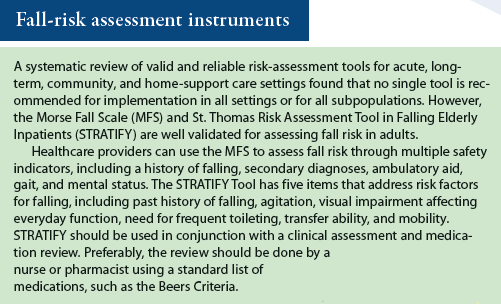Not known Factual Statements About Dementia Fall Risk
Not known Factual Statements About Dementia Fall Risk
Blog Article
Indicators on Dementia Fall Risk You Should Know
Table of ContentsGetting The Dementia Fall Risk To WorkSome Known Details About Dementia Fall Risk How Dementia Fall Risk can Save You Time, Stress, and Money.What Does Dementia Fall Risk Mean?
A loss risk evaluation checks to see exactly how likely it is that you will drop. The analysis usually includes: This includes a series of questions regarding your overall health and if you've had previous falls or issues with equilibrium, standing, and/or strolling.Treatments are referrals that may decrease your risk of falling. STEADI includes three steps: you for your danger of dropping for your risk variables that can be boosted to attempt to prevent falls (for instance, equilibrium problems, impaired vision) to lower your risk of dropping by using efficient methods (for instance, providing education and resources), you may be asked a number of concerns including: Have you dropped in the previous year? Are you worried concerning falling?
If it takes you 12 seconds or even more, it might suggest you are at greater threat for a fall. This examination checks stamina and balance.
The positions will certainly get harder as you go. Stand with your feet side-by-side. Move one foot midway forward, so the instep is touching the huge toe of your other foot. Move one foot totally in front of the other, so the toes are touching the heel of your various other foot.
More About Dementia Fall Risk
Most falls happen as an outcome of numerous adding factors; therefore, taking care of the danger of falling begins with identifying the factors that add to drop threat - Dementia Fall Risk. Some of one of the most pertinent danger variables include: Background of previous fallsChronic medical conditionsAcute illnessImpaired gait and equilibrium, reduced extremity weaknessCognitive impairmentChanges in visionCertain risky medicines and polypharmacyEnvironmental aspects can likewise raise the threat for falls, including: Poor lightingUneven or harmed flooringWet or unsafe floorsMissing or damaged handrails and order barsDamaged or improperly fitted devices, such as beds, wheelchairs, or walkersImproper use of assistive devicesInadequate supervision of the individuals residing in the NF, including those that show hostile behaviorsA successful autumn threat management program calls for a detailed medical analysis, with input from all participants of the interdisciplinary group

The care strategy ought to also consist of interventions that are system-based, such as those that promote a safe environment (suitable illumination, hand rails, get hold of bars, and so on). The effectiveness of the interventions need to be assessed periodically, and the care strategy changed as essential to show modifications in the autumn threat analysis. Applying an autumn threat management system making use of evidence-based best method can lower the occurrence of drops in the NF, while limiting the potential for fall-related injuries.
The Best Guide To Dementia Fall Risk
The AGS/BGS guideline suggests evaluating all adults aged 65 years and older for loss danger annually. This testing includes asking clients whether they have dropped 2 or more times in the past year or sought clinical focus for an autumn, or, if they have actually not dropped, whether they really feel unsteady when walking.
Individuals who have dropped once without injury ought to have their balance and gait examined; those with gait or equilibrium abnormalities ought to receive extra assessment. A background of 1 autumn without injury and without gait or balance problems does not require further evaluation past ongoing annual autumn threat testing. Dementia Fall Risk. An autumn threat evaluation is called for as component of the Welcome to Medicare exam

Indicators on Dementia Fall Risk You Need To Know
Documenting a falls background is one of the quality signs for fall prevention and management. A crucial component of threat analysis is a Continue medicine testimonial. Numerous classes of medications raise fall danger (Table 2). Psychoactive drugs in particular are independent forecasters of falls. These drugs often tend to be sedating, change the sensorium, and harm equilibrium and stride.
Postural hypotension can frequently be relieved by lowering the dose of blood pressurelowering drugs and/or stopping drugs that have orthostatic hypotension as a negative effects. Use above-the-knee support hose and copulating the head of the bed elevated might also minimize postural decreases in blood pressure. The recommended components of a fall-focused health examination are received Box 1.

A yank time above or equal to 12 seconds recommends high fall risk. The 30-Second Chair Stand test evaluates reduced extremity strength and equilibrium. Being unable to stand up from a chair of knee height without using one's arms shows increased autumn danger. The 4-Stage Balance test assesses fixed equilibrium by having the client stand in 4 positions, each gradually extra tough.
Report this page